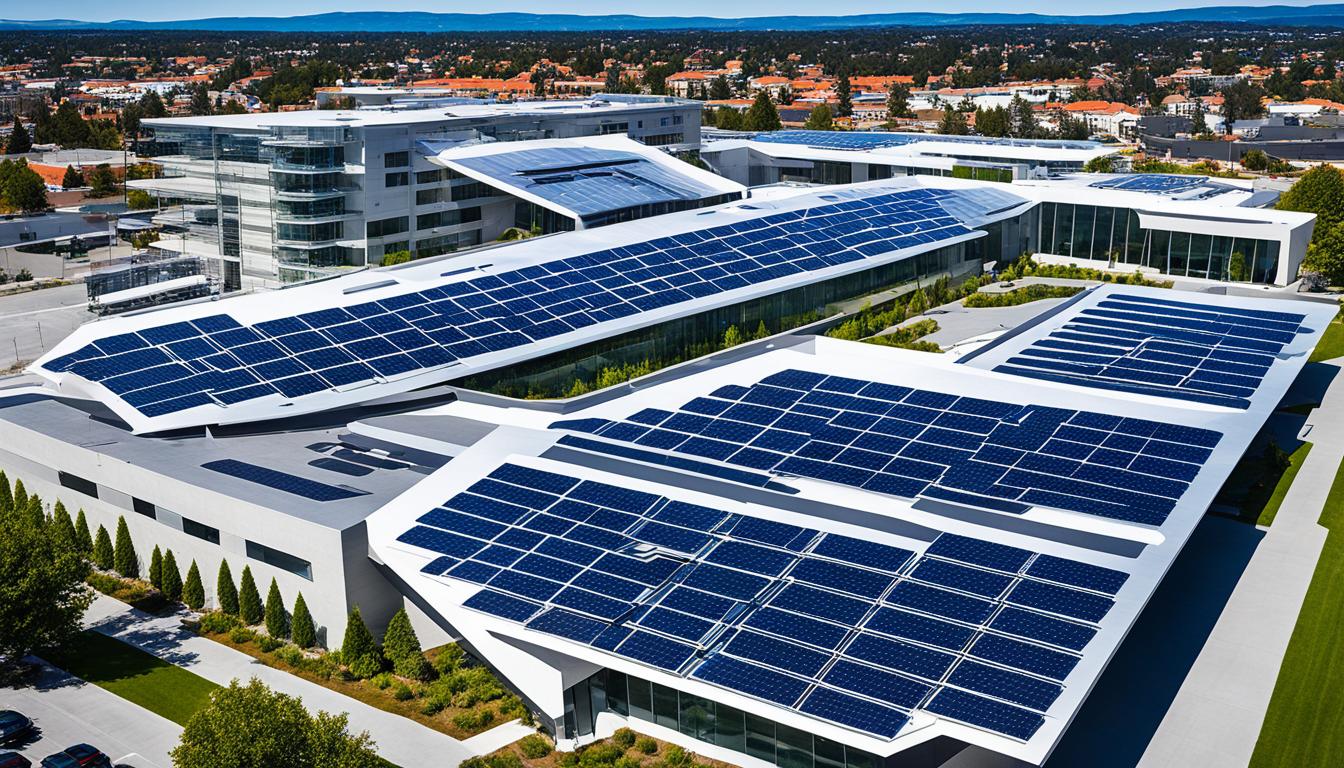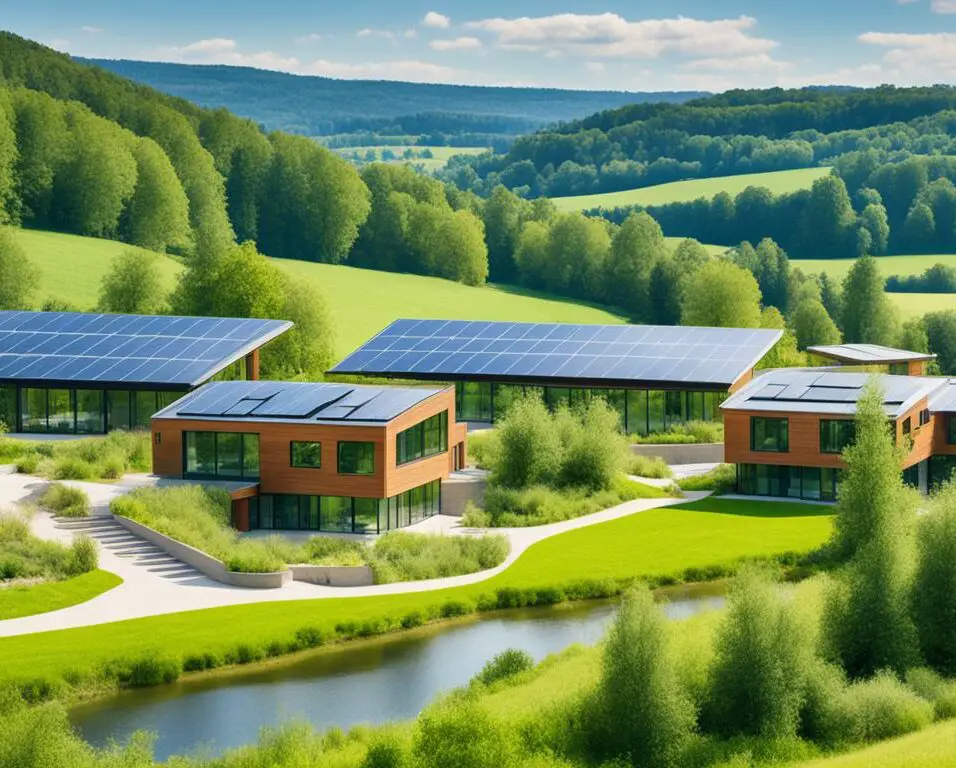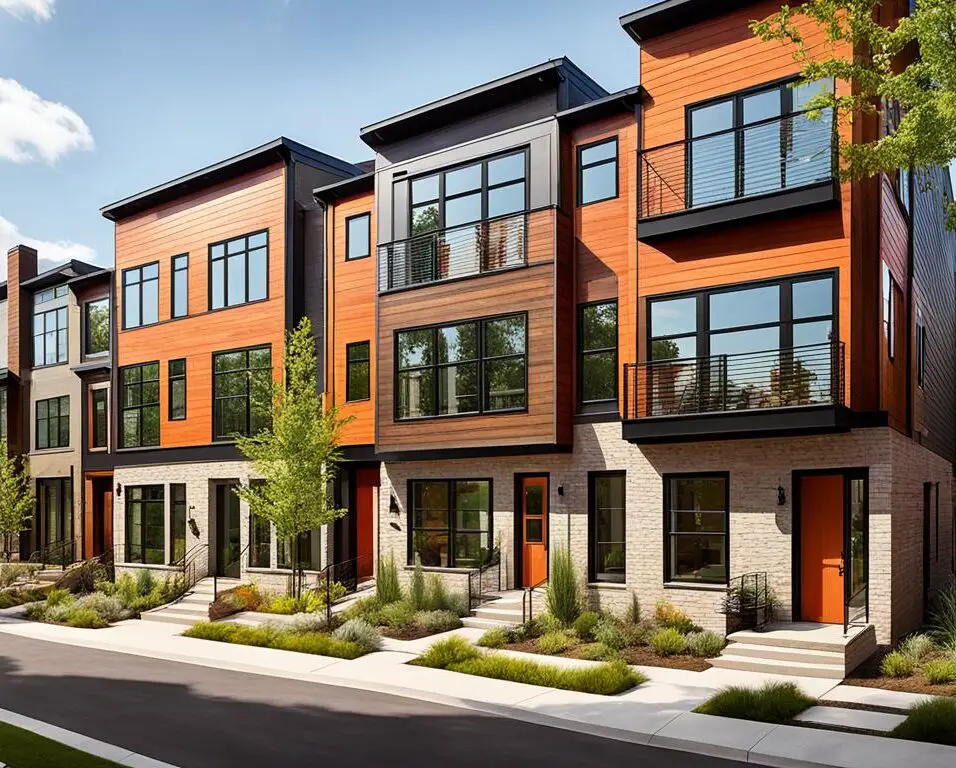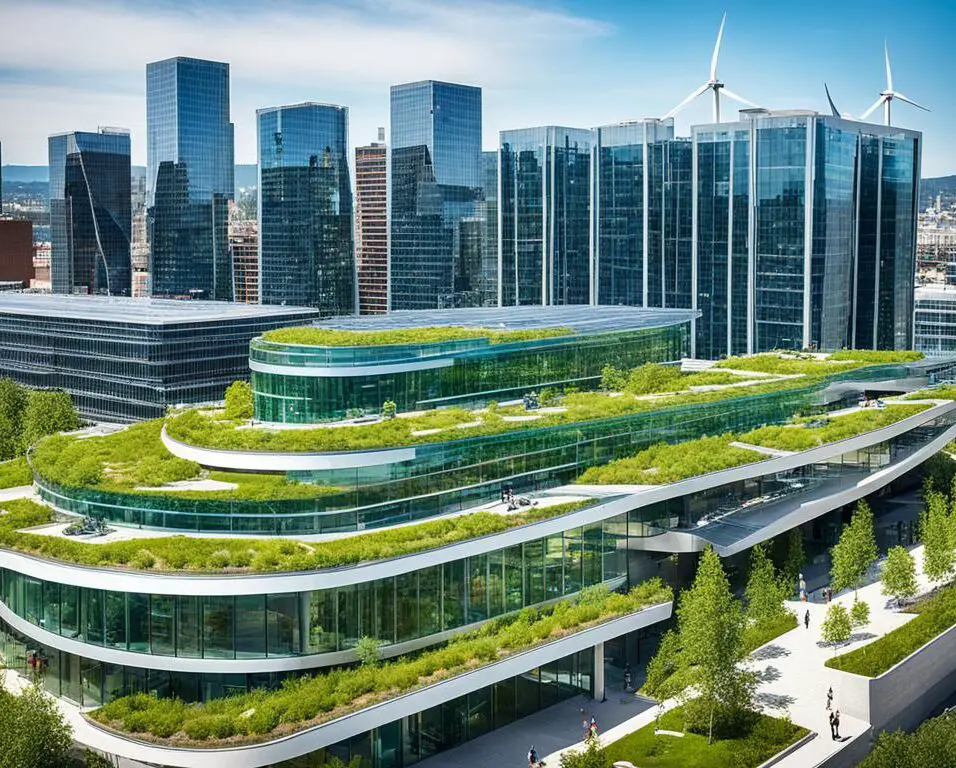Harnessing Solar Energy in Architecture for a Greener Planet
Solar energy, architecture, and sustainable designs are converging to create a greener future. As the world seeks sustainable solutions to combat climate change, the integration of solar energy in architectural projects has gained significant momentum. By harnessing the power of the sun, architects can create energy-efficient buildings that not only lower carbon emissions but also provide economic benefits. This article will delve into the various ways in which solar energy can be harnessed in architecture, exploring solar panels, passive solar design, and solar shading devices.
As the demand for renewable energy continues to rise, architects have a crucial role to play in shaping a more sustainable future. By incorporating solar energy into their designs, architects can contribute to the reduction of greenhouse gas emissions and reliance on fossil fuels. Furthermore, the integration of solar technologies can help lower energy costs for building owners and occupants. From residential homes to commercial buildings, the potential for solar energy in architecture is vast.
Architects can harness solar energy through the installation of solar panels, also known as photovoltaic (PV) panels. These panels convert sunlight into electricity, providing a clean and renewable source of power. With advancements in technology, solar panels have become more efficient and affordable, making them an attractive option for architects and building owners. Additionally, passive solar design principles can be employed to maximize the use of natural sunlight and heat, reducing the need for artificial lighting and heating or cooling systems.
Solar shading devices are another way architects can capitalize on solar energy in their designs. These devices, such as louvers, shades, or awnings, can be strategically placed to control solar radiation, regulate indoor temperatures, and enhance daylighting. By reducing heat gain and glare while optimizing natural light, solar shading devices contribute to both energy efficiency and occupant comfort.
In conclusion, the integration of solar energy in architecture offers a multitude of benefits. From reducing carbon emissions to lowering energy costs, sustainable designs powered by solar energy are paving the way for a greener planet. Architects, as key influencers in the industry, have the opportunity to shape a more sustainable future by incorporating solar technologies into their designs. By harnessing solar energy in architecture, we can create buildings that are not only visually appealing but also environmentally responsible.
Key Takeaways:
- Solar energy can be harnessed in architecture through the use of solar panels, passive solar design, and solar shading devices.
- By integrating solar technologies, buildings can become more energy-efficient and contribute to reducing carbon emissions.
- Solar panels, also known as photovoltaic panels, convert sunlight into electricity, providing clean and renewable energy.
- Passive solar design maximizes natural sunlight and heat, reducing the need for artificial lighting and heating or cooling systems.
- Solar shading devices strategically control solar radiation, regulate indoor temperatures, and enhance daylighting in buildings.
Solar Panels in Architecture
Solar panels, also known as photovoltaic (PV) panels, are a popular method of harnessing solar energy in architecture. These panels are made up of photovoltaic cells that convert sunlight into electricity.
Installed on the roofs or facades of buildings, solar panels capture sunlight and generate clean, renewable energy. The electricity produced can be connected to the electrical grid, offsetting the building’s energy consumption, or stored in batteries for on-site energy storage.
Solar panels have significantly improved in efficiency and affordability over the years, making them an attractive option for architects and building owners. Advances in technology and manufacturing have increased the power output and durability of solar panels, enabling them to withstand various weather conditions and last for decades.
The financial and environmental benefits of solar panels in architecture are numerous. By relying on renewable energy, buildings can reduce their carbon footprint and contribute to a more sustainable future. The electricity generated by solar panels can also result in cost savings on energy bills and potentially even generate revenue through feed-in tariffs or net metering programs.
There are various types of solar panels available in the market, each with its own characteristics and suitability for different architectural projects. Some common types include monocrystalline, polycrystalline, and thin-film solar panels. Architects and building owners can choose the most appropriate type based on factors such as space availability, aesthetic preferences, and energy requirements.
| Type of Solar Panel | Efficiency | Cost | Appearance |
|---|---|---|---|
| Monocrystalline | High | High | Uniform black or dark blue color with rounded edges |
| Polycrystalline | Moderate | Moderate | Varied blue color with square or diamond-shaped cells |
| Thin-Film | Lower | Lower | Flexible, can be integrated into building materials |
When it comes to installation, solar panels can be mounted on rooftops using racks and brackets or integrated into building facades as part of the architectural design. The orientation and tilt angle of the panels are crucial for maximizing energy production, as they determine the amount of sunlight the panels receive throughout the day.
Architects and building owners should consider factors such as shading from nearby buildings or trees, as well as the structural integrity of the building, when designing the layout for solar panels. Collaborating with solar experts and engineers can help ensure the optimal placement and installation of the panels, taking into account both the functional and aesthetic aspects.
Incorporating solar panels in architecture not only helps reduce dependence on fossil fuels but also showcases a commitment to sustainability and renewable energy. Buildings equipped with solar panels become a tangible representation of sustainable practices and inspire others to adopt similar measures.
By integrating solar panels into architecture, we can power our buildings using clean and renewable energy sources. This not only reduces our carbon footprint but also paves the way for a more sustainable and energy-efficient future.
Passive Solar Design in Architecture
Passive solar design is an architectural approach that maximizes the use of natural sunlight and heat from the sun to warm and cool a building without the need for mechanical systems. By carefully considering factors such as building orientation, window placement, and the utilization of thermal mass, architects can create energy-efficient and comfortable spaces while reducing reliance on artificial lighting and HVAC systems.
Building orientation plays a crucial role in passive solar design. By positioning a building to take full advantage of the sun’s path throughout the day, architects can optimize solar gain in winter and minimize it in summer. South-facing windows allow for maximum sunlight penetration, while proper shading techniques, such as overhangs or trellises, can prevent excessive heat gain during hot months. This strategic use of building orientation and shading helps maintain a comfortable indoor temperature year-round.
“Passive solar design is an innovative approach that leverages the power of the sun to create energy-efficient, sustainable buildings. By focusing on building orientation and proper window placement, architects can harness the sun’s energy to reduce the need for artificial lighting and heating or cooling systems, thus lowering energy consumption and carbon footprint.” – William Johnson, Architect
Another important aspect of passive solar design is thermal mass. Thermal mass refers to materials with high heat storage capacity, such as concrete, brick, or stone. These materials absorb heat during the day and release it slowly at night, helping to stabilize indoor temperatures and reduce the need for mechanical heating and cooling. By incorporating thermal mass elements, such as exposed concrete floors or a masonry wall, into the design, architects can create a more comfortable and energy-efficient space.
Integrating passive solar design principles into architectural projects offers numerous benefits. Not only does it reduce dependence on fossil fuels and lower greenhouse gas emissions, but it also creates spaces that are visually pleasing and promote occupant comfort. Additionally, passive solar design can result in long-term cost savings by minimizing energy consumption and reducing utility bills.
Key Principles of Passive Solar Design
| Principle | Description |
|---|---|
| Building Orientation | Positioning the building to maximize sun exposure and minimize heat gain |
| Window Placement | Strategically locating windows to capture sunlight and facilitate natural ventilation |
| Shading Techniques | Using overhangs, awnings, or shading devices to prevent excessive solar heat gain |
| Thermal Mass | Incorporating materials with high heat storage capacity to regulate indoor temperatures |
Designing with passive solar principles not only contributes to a greener planet but also enhances the overall quality and sustainability of architectural projects. By embracing passive solar design, architects can play a crucial role in creating energy-efficient buildings that prioritize occupant comfort and minimize environmental impact.
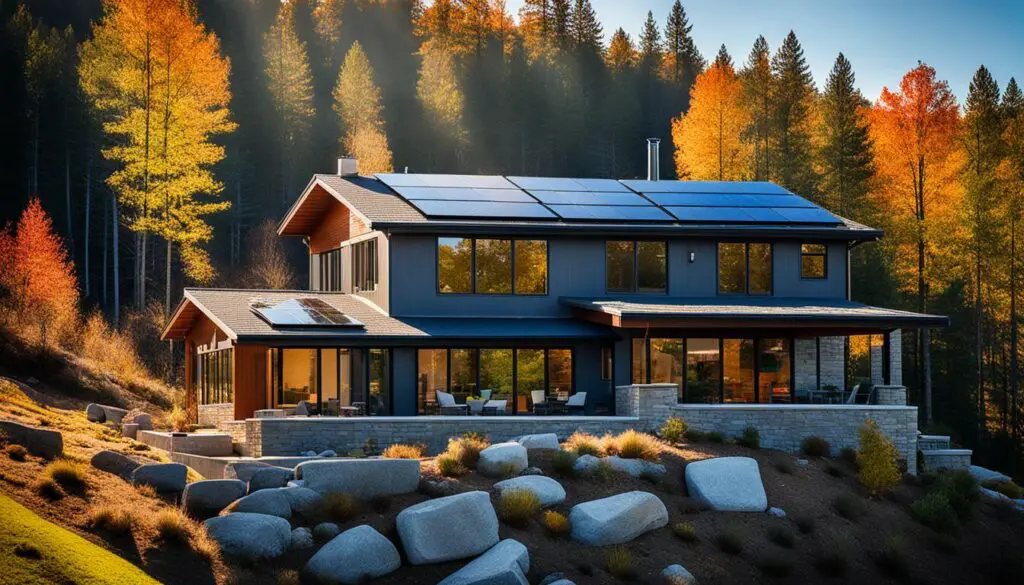
Solar Shading Devices in Architecture
Solar shading devices are essential architectural elements that effectively control the amount of solar radiation entering a building, mitigating heat gain or loss. By selectively blocking or filtering sunlight, these devices, including louvers, shades, awnings, and brise-soleil, are integrated into the building envelope to optimize energy efficiency and occupant comfort.
By strategically placing solar shading devices on windows, architects can achieve multiple benefits. Firstly, glare is significantly reduced, creating a more visually comfortable indoor environment. Secondly, the devices minimize heat gain, preventing excessive solar radiation from heating the interior spaces and reducing the need for cooling systems. This addresses the energy efficiency challenges commonly faced in architecture.
Moreover, solar shading devices significantly contribute to daylighting, which is the deliberate use of natural light to illuminate interior spaces. By allowing controlled natural light to penetrate deep into a building, these devices reduce the reliance on artificial lighting during daylight hours, minimizing energy consumption and enhancing the visual quality of indoor environments.
Architects must consider several design considerations when implementing solar shading devices. These include the orientation and size of windows, the material and configuration of the shading devices, and their impact on the overall aesthetics of the building. With careful design, solar shading devices can be seamlessly integrated into the architectural design, enhancing both functionality and visual appeal.
Implementing solar shading devices in architecture offers numerous energy-saving benefits, contributing to a more sustainable built environment. By reducing glare, minimizing heat gain, and improving daylighting, these devices play a vital role in enhancing occupant comfort, reducing energy consumption, and optimizing the overall energy performance of a building.
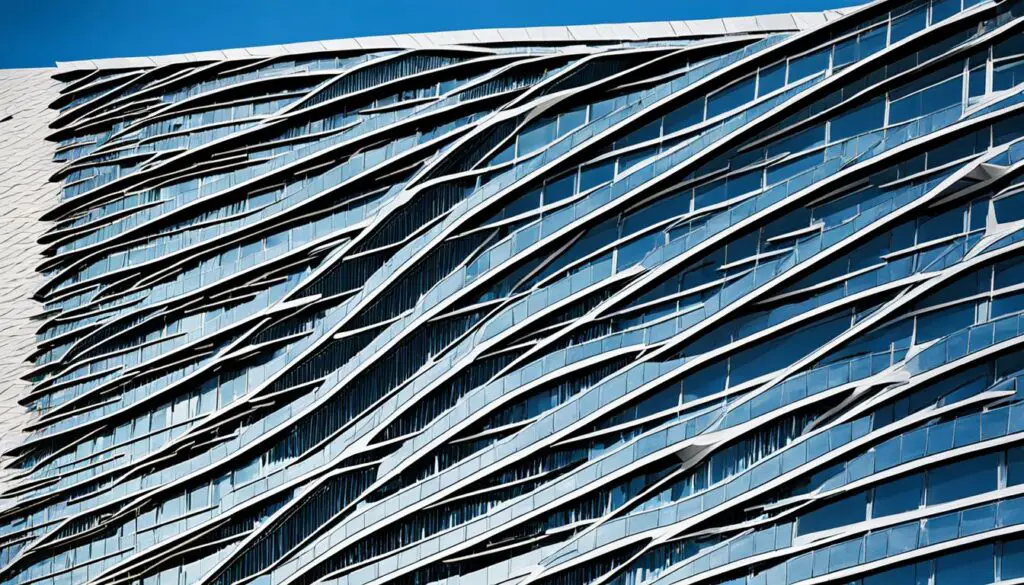
Benefits of Solar Shading Devices in Architecture:
- Reduction of glare and eye strain
- Minimization of heat gain, improving energy efficiency
- Enhanced daylighting, reducing the need for artificial lighting
- Improved occupant comfort and well-being
- Optimized energy performance of buildings
In conclusion, the integration of solar shading devices into architectural designs is crucial for achieving energy efficiency and occupant comfort. By carefully considering design considerations and incorporating these devices, architects can create sustainable buildings that prioritize daylighting, reduce energy consumption, and contribute to a greener future.
Conclusion
Solar energy has revolutionized the field of sustainable architecture, providing numerous environmental and economic advantages. Through the integration of solar panels, passive solar design, and solar shading devices, architects are able to create energy-efficient buildings that greatly reduce their reliance on conventional energy sources. These innovative design strategies not only contribute to a greener planet by lowering carbon emissions but also result in significant energy cost savings for building owners and occupants.
As the demand for renewable energy continues to rise, the incorporation of solar energy in architecture is expected to become even more prevalent. Architects play a crucial role in driving the adoption of solar energy within the industry, leading us towards a more sustainable future for our buildings and communities.
By harnessing the power of solar energy, architects can achieve remarkable energy efficiency, effectively mitigating the impact of climate change and promoting a more sustainable world. With the ongoing advancements in solar technology and the increasing focus on sustainable construction, the potential for solar energy in architecture is limitless. As we strive towards a greener tomorrow, it is imperative that architects continue to embrace solar energy as a fundamental component of sustainable architecture.



